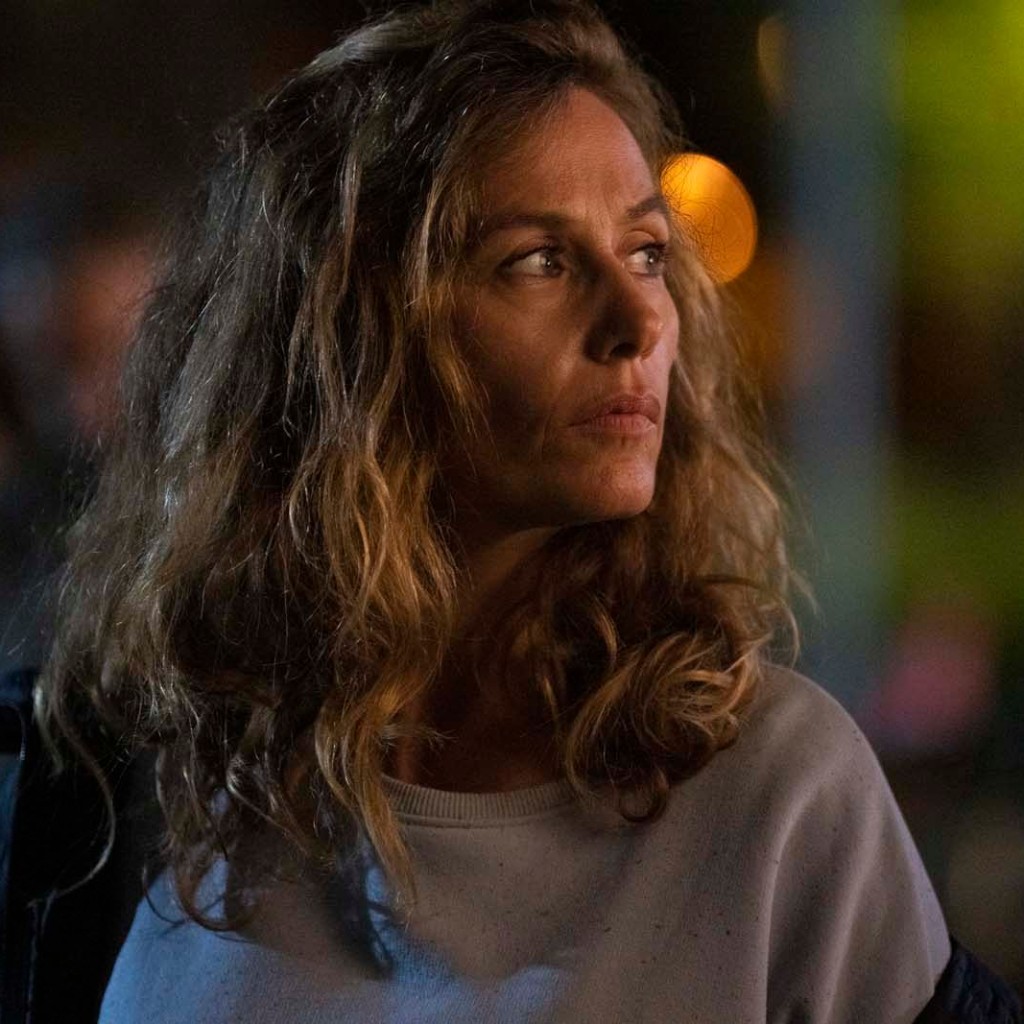Cette semaine, notre critique cinéma met en lumière quatre films captivants qui font parler d’eux : Dalloway de Yann Gozlan, un thriller psychologique sur les dérives de l’intelligence artificielle, King of Kings : À la poursuite d’Edward Jones, un documentaire poignant explorant une page méconnue de l’histoire américaine, Sirat d’Oliver Laxe, une immersion poétique et contrastée dans le désert marocain et enfin Ciudad sin sueño de Guillermo Galoe, un portrait authentique d’une jeunesse en quête de liberté dans l’un des plus grands bidonvilles d’Europe.
This week, our cinema review highlights four captivating films making waves: Dalloway by Yann Gozlan, a psychological thriller about the dangers of artificial intelligence; King of Kings: Chasing Edward Jones, a poignant documentary exploring a little-known chapter of American history; Sirat by Oliver Laxe, a poetic and contrasting immersion in the Moroccan desert; and finally Ciudad sin sueño by Guillermo Galoe, an authentic portrait of youth seeking freedom in one of Europe’s largest shantytowns. Each offers a unique experience blending aesthetics, emotion, and reflection.
King of kings : à la poursuite d’Edward Jones : quand la mémoire familiale devient mémoire collective
Sorti le 10 septembre, le documentaire King of Kings : À la poursuite d’Edward Jones mérite un coup de projecteur. Réalisé par Harriet Marin Jones, il retrace la vie de son grand-père Edward Jones, figure afro-américaine qui, dans le Chicago des années 30 et 40, fit fortune grâce au jeu clandestin du Policy, précurseur du loto moderne.
Ce portrait singulier s’élargit rapidement pour embrasser un riche contexte historique. Le film explore ainsi la ségrégation raciale qui structure la société de l’époque, l’influence persistante du Ku Klux Klan, ainsi que les rapports de force avec la mafia italienne, omniprésente dans le Chicago d’alors. Ces éléments confèrent au récit une profondeur qui dépasse la simple histoire familiale.
Ce qui frappe, c’est que derrière la trajectoire intime d’Edward Jones, c’est en réalité une grande fresque de l’histoire américaine qui se dessine en arrière-plan : celle des luttes de pouvoir, des injustices, mais aussi de la résilience et de l’ambition. En mêlant archives, témoignages et approche personnelle, Harriet Marin Jones réussit à tisser un documentaire captivant, sensible et éclairant.
Derrière l’intime se déploie une fresque historique qui rappelle combien la mémoire familiale peut devenir mémoire collective.
💙💙💙🤍
Released on September 10, the documentary King of Kings: Chasing Edward Jones deserves the spotlight. Directed by Harriet Marin Jones, it traces the life of her grandfather Edward Jones, an African-American figure who made his fortune in Chicago during the 1930s and 40s through the clandestine Policy game, a precursor to the modern lottery. This unique portrait quickly broadens to embrace a rich historical context. The film explores the racial segregation structuring society at the time, the persistent influence of the Ku Klux Klan, and the power struggles with the Italian mafia, which was omnipresent in Chicago then. These elements give the story a depth beyond a simple family history. What stands out is that behind Edward Jones’s personal journey lies a larger fresco of American history: one of power struggles, injustices, but also resilience and ambition. Combining archival footage, testimonies, and a personal approach, Harriet Marin Jones weaves a captivating, sensitive, and enlightening documentary. Behind the intimate story unfolds a historical tapestry that reminds us how family memory can become collective memory.
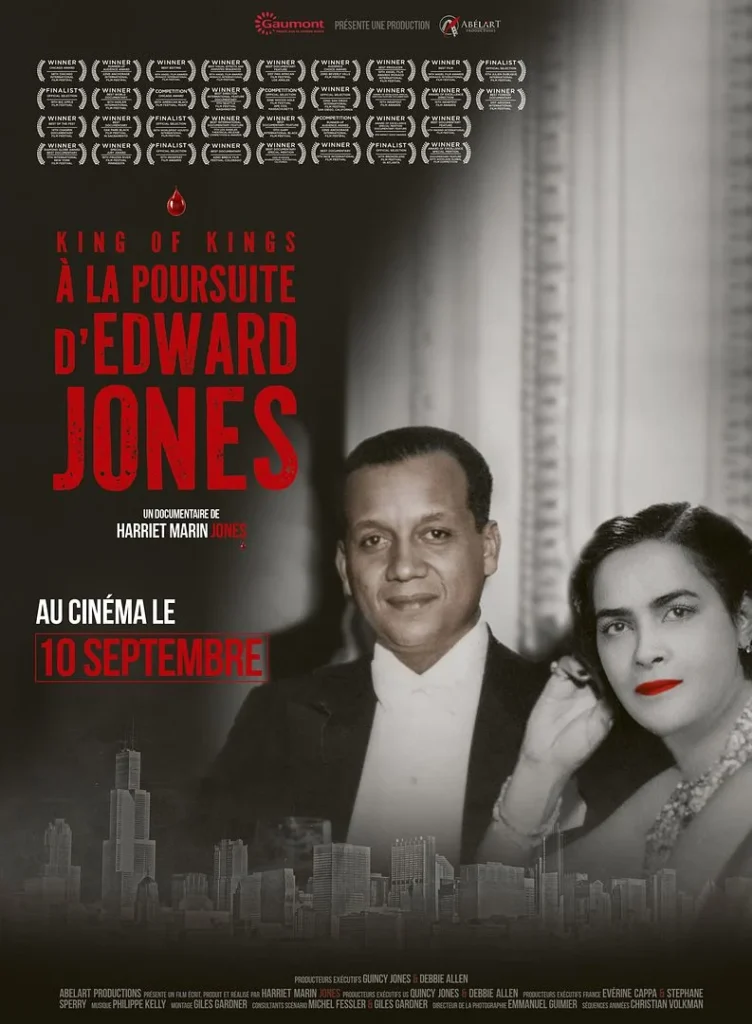
Dalloway, un thriller psychologique au charme inégal
Sorti le 17 septembre 2025, Dalloway, signé Yann Gozlan, s’attaque à la question épineuse de l’intelligence artificielle dans notre quotidien. Adaptation libre du roman Les Fleurs de l’ombre de Tatiana de Rosnay, le film suit Clarissa (Cécile de France), romancière en quête d’inspiration, qui accepte une résidence artistique dans un environnement ultramoderne. Elle y rencontre Dalloway, une intelligence artificielle destinée à l’aider dans son travail. Très vite, la frontière entre assistance et intrusion devient floue.
Visuellement, le film séduit. La photographie de Manuel Dacosse met en valeur les décors minimalistes et renforce une atmosphère oppressante qui accompagne l’évolution psychologique du personnage principal. Cécile de France, quant à elle, livre une performance convaincante, incarnant avec justesse la fragilité et les doutes de son héroïne. La voix de Mylène Farmer, donnant vie à l’IA, apporte une dimension à la fois mystérieuse et inquiétante.
Pourtant, malgré ses qualités esthétiques et ses interprètes, Dalloway peine à surprendre. Le scénario suit des sentiers narratifs déjà bien connus du genre et la plupart des personnages secondaires manquent de profondeur.
Si Dalloway se distingue par son ambiance et ses réflexions sur la place de l’IA, il reste un thriller psychologique au charme inégal. Une expérience intéressante pour les amateurs de science-fiction contemporaine, mais qui n’atteint pas le rang des œuvres marquantes du genre.
💙💙🤍🤍
Released on September 17, 2025, Dalloway, directed by Yann Gozlan, tackles the thorny issue of artificial intelligence in our daily lives. Loosely adapted from Tatiana de Rosnay’s novel Les Fleurs de l’ombre, the film follows Clarissa (Cécile de France), a novelist searching for inspiration, who accepts an artist residency in an ultra-modern environment. There, she meets Dalloway, an artificial intelligence designed to assist her in her work. Soon, the line between assistance and intrusion becomes blurred. Visually, the film captivates. The cinematography by Manuel Dacosse highlights minimalist sets and reinforces a suffocating atmosphere that accompanies the psychological evolution of the main character. Cécile de France delivers a convincing performance, accurately embodying the fragility and doubts of her heroine. The voice of Mylène Farmer, who brings the AI to life, adds a mysterious and unsettling dimension. However, despite its aesthetic qualities and its cast, Dalloway struggles to surprise. The screenplay follows narrative paths well-known in the genre, and most secondary characters lack depth.While Dalloway stands out for its atmosphere and its reflections on the place of AI, it remains a psychological thriller with uneven charm. An interesting experience for fans of contemporary science fiction, but it does not reach the level of landmark works in the genre.
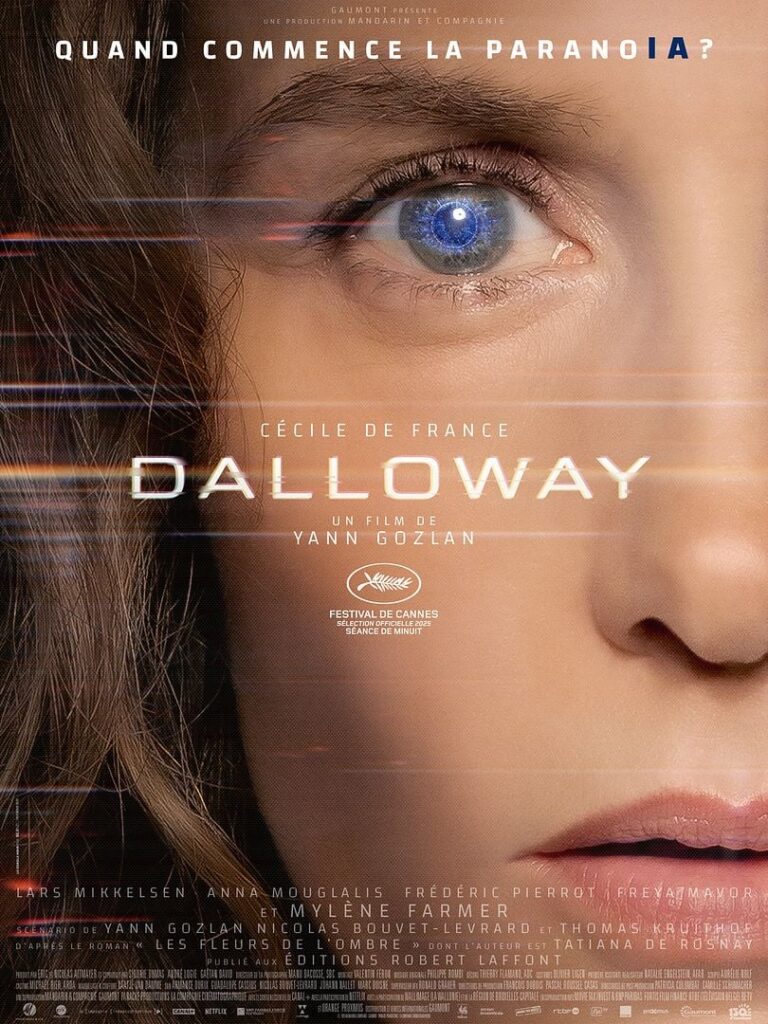
Entre fulgurances et failles, Sirāt divise
Au cœur des montagnes du sud du Maroc, Luis, accompagné de son fils Estéban, cherche sa fille aînée Mar, disparue depuis plusieurs mois après avoir participé à une rave. Ils se joignent à un groupe de ravers en route vers une ultime fête dans le désert, espérant y retrouver Mar. À mesure qu’ils s’enfoncent dans cette immensité brûlante, ce voyage les confronte à leurs propres limites et devient une quête autant extérieure qu’intérieure.
Présenté en grande pompe à Cannes, Sirat s’est imposé comme l’un des films les plus commentés du festival. L’œuvre frappe par certains choix de mise en scène audacieux et quelques séquences inattendues, qui témoignent d’un réel parti pris artistique. Ces fulgurances, indéniablement marquantes, contribuent à installer une identité singulière.
Cependant, cette inventivité ne suffit pas toujours à maintenir l’attention sur la durée. Le film, malgré ses éclats, peine à garder une cohérence ou une intensité narrative constante. Si l’on reconnaît volontiers l’originalité de la proposition, l’ensemble peut laisser à distance, sans parvenir à immerger totalement le spectateur.
Sirat apparaît ainsi comme une œuvre contrastée : brillante par moments, mais inégale dans son impact global.
💙💙🤍🤍
Deep in the mountains of southern Morocco, Luis and his son Estéban are searching for their eldest daughter Mar, who has been missing for several months after attending a rave. They join a group of ravers heading to one last party in the desert, hoping to find Mar there. As they venture further into this vast, scorching landscape, the journey confronts them with their own limits and becomes both an external and internal quest. Premiered with great fanfare at Cannes, Sirat has become one of the most talked-about films at the festival. The work stands out for some bold directorial choices and unexpected sequences that reflect a genuine artistic vision. These striking moments contribute to establishing a unique identity. However, this inventiveness does not always manage to hold attention throughout. Despite its flashes of brilliance, the film struggles to maintain narrative coherence or sustained intensity. While the originality of the approach is recognized, the overall effect may create distance rather than fully immerse the viewer. Sirat thus appears as a mixed work: brilliant at times but uneven in its overall impact.
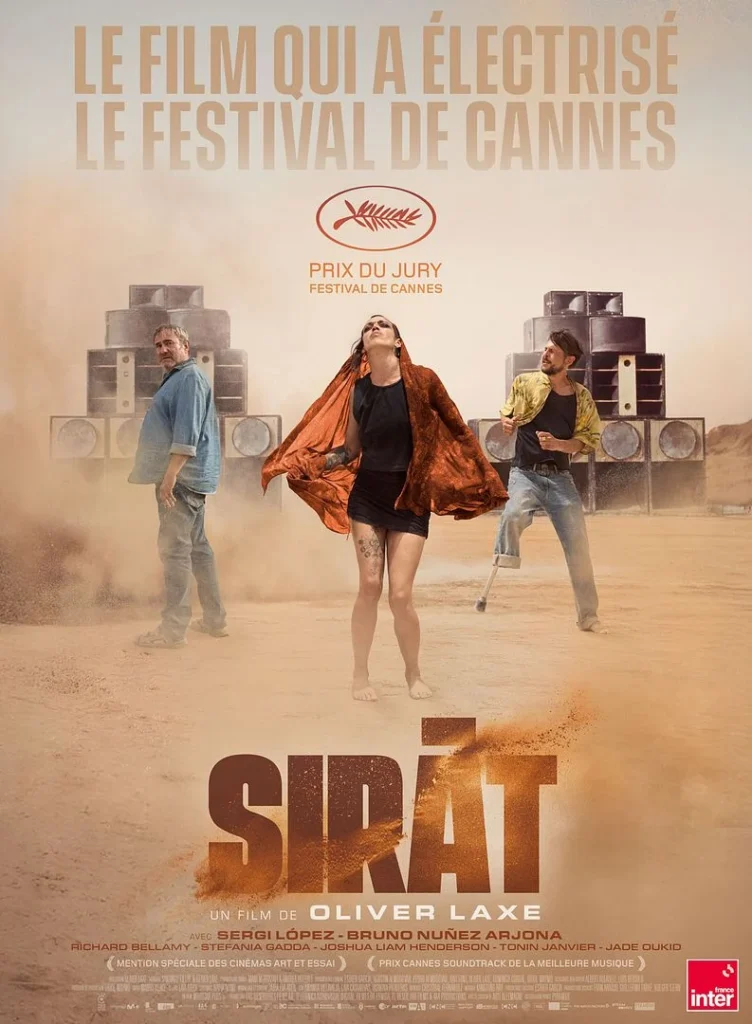
Ciudad sin sueño : plongée intime dans La Cañada Real
Ciudad sin sueño, premier long-métrage de fiction de Guillermo Galoe, sorti le 3 septembre 2025, propose une immersion saisissante dans La Cañada Real, l’un des plus grands bidonvilles d’Europe, situé en périphérie de Madrid. Déjà remarqué à la Semaine de la Critique du Festival de Cannes, le film a reçu le Prix SACD du meilleur scénario, attribué à Galoe et son co-scénariste Víctor Alonso-Berbel.
Le film suit Toni, un adolescent rom de 15 ans, confronté à l’annonce d’une expulsion imminente et au départ de son ami Bilal vers Marseille. Déchiré entre fidélité à ses racines et désir d’un avenir meilleur, Toni incarne les dilemmes d’une jeunesse prise au piège entre précarité et aspiration à la liberté.
Guillermo Galoe adopte un style réaliste et participatif, collaborant étroitement avec les habitants de La Cañada Real. La photographie de Rui Poças, combinée aux images tournées par Toni lui-même sur son téléphone, confère au film une dimension poétique et subjective, capturant la réalité du bidonville à travers le regard d’un adolescent. Ce mélange d’authenticité et de sensibilité visuelle permet au spectateur de ressentir à la fois la dureté et la beauté de ce milieu.
Explorant des thèmes universels tels que la résilience, la perte et l’espoir, en évitant le piège du misérabilisme, le film met en lumière la solidarité et la dignité des habitants de La Cañada Real et ouvre une fenêtre sur un monde souvent invisible, invitant le spectateur à réfléchir à des réalités sociales contemporaines tout en offrant un portrait touchant et poétique de la vie dans un quartier marginalisé.
💙💙🤍🤍
Ciudad sin sueño, the first feature fiction film by Guillermo Galoe, released on September 3, 2025, offers a striking immersion into La Cañada Real, one of Europe’s largest slums located on the outskirts of Madrid. Already noted at the Cannes Critics’ Week, the film was awarded the SACD Prize for Best Screenplay, given to Galoe and his co-writer Víctor Alonso-Berbel. The film follows Toni, a 15-year-old Roma teenager facing the announcement of an imminent eviction and the departure of his friend Bilal to Marseille. Torn between loyalty to his roots and the desire for a better future, Toni embodies the dilemmas of a youth caught between precariousness and the aspiration for freedom. Guillermo Galoe adopts a realistic and participatory style, working closely with the inhabitants of La Cañada Real. The cinematography by Rui Poças, combined with footage shot by Toni himself on his phone, gives the film a poetic and subjective dimension, capturing the reality of the shantytown through the eyes of a teenager. This mix of authenticity and visual sensitivity allows the viewer to feel both the harshness and the beauty of this environment. Exploring universal themes such as resilience, loss, and hope without falling into the trap of misery, the film highlights the solidarity and dignity of La Cañada Real’s inhabitants and opens a window onto a world often invisible, inviting the viewer to reflect on contemporary social realities while offering a touching and poetic portrait of life in a marginalized neighborhood.
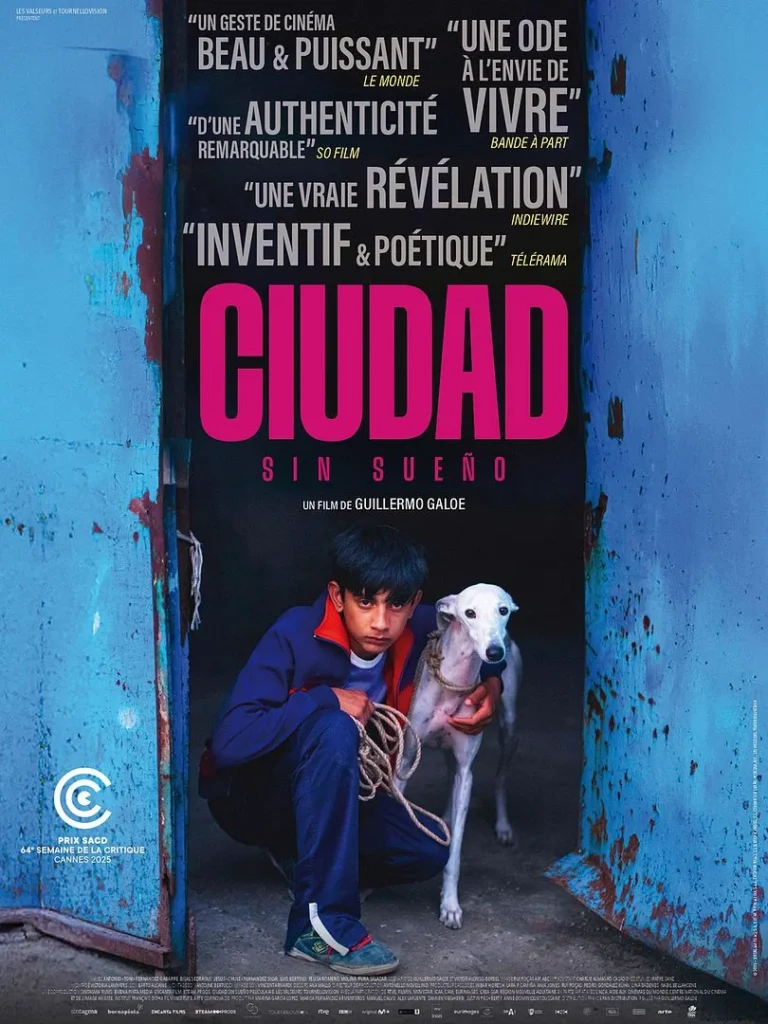
Photographie principale : ©ZHOU YUCHAO © Mandarin & Compagnie – Gaumont
Vous aimerez aussi : 4 spectacles incontournables à voir à Paris
CB
